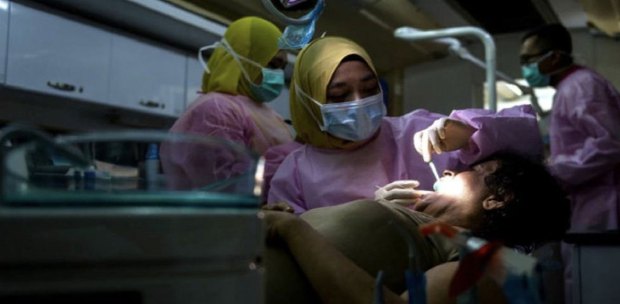LETTERS: Oral and dental diseases constitute a critical global health crisis with 3.9 billion people affected, especially periodontal (gum-related) diseases, and they share similar risk factors as many non-communicable diseases.
The 2017 WHO Global Burden of Disease Study reported that oral diseases affect 3.5 billion people worldwide while the International Agency for Research on Cancer reported that cancers of the lip and oral cavity are among the top 15 most common cancers worldwide.
In Malaysia, the National Oral Health Survey of Preschool Children reported about 72 percent of 5-year-old children have toothaches and dental caries (MOH 2017). Nutrition, food habits, systemic factors, genetic and poor oral hygiene factors lead to tooth decay/caries and teeth lost in children, and are linked to poor self-esteem.
The impact of poor oral hygiene (in typically developing children as well as in children with developmental disabilities) on individuals, families, society, and public health remains largely unrecognized and has yet to be addressed from a policy perspective.
The infant teeth start erupting after 6 months or so, and may be delayed in infants with disabilities, and this dentition period is the period when a parent should start brushing their kid's teeth softly.
A global study suggests a lack of parental focus on oral hygiene in normal children. The USA study by Unilever Oral Care reported that 36 per cent of parents are not enforcing nightly brushing regularly, 21 per cent sometimes let their children go to school without brushing teeth, and 18 per cent sometimes let children skip brushing as a reward.
Dental plaque leads to dental caries (decay) and periodontal (gum) diseases. Severe periodontal (gum) disease affects almost 10 percent of the global population while more than 530 million children suffer from dental caries of primary teeth.
Periodontal diseases, due to infections/inflammation around the gums and bone supporting the teeth often starts with gingivitis (i.e., stage of swollen, red gums).
Here's the ABC principle of self-care routine of oral hygiene in children:
1. Activate early – Start early during dentition period, and use simple TSD (tell, show, do) technique, where parents would explain, show, and perform the brushing technique to their children.
2. Brush often - preferably after eating, to build up a routine early. Brushing every 3 teeth at a time in circular motion (not horizontal) for 2 minutes is the normal brushing time.
3. Check at the end - Proper brushing of part of the teeth that's difficult to reach and checking for bad breath (i.e., halitosis) can arrest the poor oral hygiene problem early.
Below are a few tips for developing oral hygiene adherence:
First, use a soft child-size toothbrush for kids around the age of 1 or 2. With a disabled child, start with just water and clean cloth to brush teeth. Speak to your occupational therapist if your child has grip issues or in need of some form of aids or adaptation.
Second, reinforce learning using good visual techniques to teach the concept of plaque, which may be difficult for children. This can help the child understand the purpose of brushing, and not just the act of brushing.
Third, to help establish a daily routine of self-care, especially with children with some form of disability, remember every child's need is different. There is no one size that fits all, and an assessment of their needs and functional level with a behavioural training intervention with the carer may help.
Most oral health conditions are largely preventable in the early stages, and should be prioritised. Oral health is a key indicator of overall health, well-being and quality of life. Prevention - the best cost-saving public health strategy!
Dr Klarene Ow Kwai LynAssoc Prof Dr Wey Mang CheckAssoc Prof Dr Loh Siew YimUniversity Malaya





